I was listening to the wonderful Andras Schiff lectures on the Beethoven Sonatas (link here). He gets to the last movement of the “Hammerklavier” and promptly points an accusatory finger at the performer:
It should really not sound like chaos. If it sounds like chaos, it’s the performer’s fault; you have the right as a listener to understand something of this fugue, and it is [the performer’s] duty…
He adds:
…really the more you think about this fugue, and the more you analyze it, you discover an incredible sense of order.
I am not disagreeing with him, but I must admit this constant putting-Beethoven-in-order gets on my nerves. It makes me want to yell at the guy in Starbucks when there’s no blueberry crumbcake. Probably no other composer has been so obsessively mapped (Google-mapped, Google-streeted, even); his schemes have all been “found out;” he has been explored down to the last nanometer of contrapuntal unfolding in the deepest inner voice of the world. What should by rights be remote, a breathtaking Timbuktu of tones, is instead littered, when you arrive, with the droppings of musicologists, theorists, selling Schenkerian souvenirs and helpful pamphlets comparing legions of past performances. They tell you with one voice: we have already been here. (Oh, but, by the way, why are you modern performers playing so boringly, so predictably?)
Yes, the listener has a right to “understand something of this fugue.” But the listener has other rights. They have the right to be thrilled by this fugue, for example, and I could list others: the right to be dazzled, confused, whirled around, amused, stunned, bewildered, frenzied, the right to join in, to be caught up, to laugh wickedly with Beethoven and to feel out of breath, winded by stretti, by the endless chain of interruptive entrances, by dizzy leaping trills, and then to welcome the D major section, to bask in the one breath of the fugal dragon, its transcendent inhale before the fire resumes.
Let’s call this Jeremy’s Bill of Rights of the Hammerklavier Fugue. It is amenable to amendments. Let’s concede that many performances, for all sorts of forgivable human reasons, veer unproductively towards chaos and its simpler cousin, mess. So, this inspires Schiff’s wise advice.
However, though the building is brilliantly structured, I don’t think it is supposed to appear–voila!–perfectly, miraculously, shining on the hill. It is not impregnable. It is not a castle. It is the opposite of fortified; every wall is fluid, every column quicksand.  It is an impossible, Seussian creation that is crumbling constantly, toppling over itself, and yet remaining valiantly structured, somehow, a structure continually vying with decay. What’s more: the decay is embraced happily, as the food of fantasy; the dangers are laughed at and laughed off, into joyful oblivion.
It is an impossible, Seussian creation that is crumbling constantly, toppling over itself, and yet remaining valiantly structured, somehow, a structure continually vying with decay. What’s more: the decay is embraced happily, as the food of fantasy; the dangers are laughed at and laughed off, into joyful oblivion.
A fugue (let us say) is like a teacher, piling one proposition or idea upon another in order to demonstrate and accumulate a larger, more complex organism of thought. In this analogy, the teacher first proposes something: “here’s an idea,” (this idea is the subject, in music theory speak). The teacher then builds upon this proposition; the second entrance intervenes and a whole set of other notes must be invented to go along with it (subject/countersubject::idea/consequences). Then comes the third entrance, and with this yet more must be done etc. etc. Reasons pile upon reasons. And yet the process, particularly at the outset, is terribly, intentionally transparent. It takes pains to explain itself. The subject is always presented alone at first–for simplicity’s sake, for clarity’s sake–for the “ease of understanding,” and to allow for subsequent progression into complexity.
The Hammerklavier fugue subject, the exposition, is a fascinating rethinking of this conventional process of “explaining itself.” It begins with the well-known leaping tenth to a trill:
This is the “ahem” of the theme; it coughs trillingly to let you know it has arrived. Then come descending passages, based on the skeletons of thirds (Bb-G-Eb-C-A-F):
These thirds have been well-documented as the idée fixe of the whole Sonata, and if you look back at the three preceding movements,, you can see that clearly (and if you don’t you’re an idiot). Now, thirds are marvelous things, and they can spin us off on rollercoasters through the most varied tonal regions, but–if you had to complain about them at all!–you might say they are a little too yielding, a little too multivalent, overly pliable, like me after a couple Cosmos. They are terribly consonant, which is theory speak for agreeable.
Beethoven addresses, then, this third “problem.” Somehow against the easy descent, he must interpose something else, something difficult. The sliding, lubricated logic of the thirds is delightful, yes, but ultimately empty; it must be arrested to have … meaning? (whatever that is). So, having rearrived at the F from which the theme began (clever, clever, Beethoven baby!), a new idea is proposed, which we might describe as follows …
Suppose you wanted to start on that F and get to the D above it in the middle of the next beat.
Using only the diatonic notes of the B-flat major scale, however, there is a bit of a “problem”:
Yes, you end up one note too high, on E-flat. Whoops. There are not enough notes within the scale to fill the rhythmic space. So. The easy solution would be to interpolate just ONE chromatic note somewheres or other. For instance:
Yes, then the little G# lurks subtly in the middle, helping us to fill the space between the consonances F and D in the desired rhythmic pattern. There are many similar options for Beethoven to “hide” his dissonance (like you would hide a nail or bolt behind some molding or whatever) … But Beethoven does not choose to hide his chromatic interpolation, his “wrong note.” No, he chooses the most “in your face” dissonance possible:
… such that the dissonance appears on the strong part of the beat. This dissonance argues forcefully with the tonic, a rather important note. (No, you jerk, not B-flat, B-natural!) Then he does the same, again, a fourth higher …
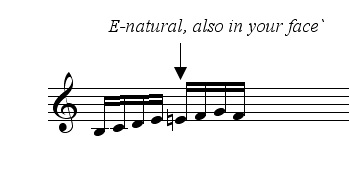
Aha. And then the telling detail: Beethoven now goes over that whole gesture once more:
I think any performer must ask themselves: why twice? Why duplicate a duplication? Why is this subject flirting with redundancy? Twice over this idea, and then perhaps you–the listener–are ready to move on to the next lesson. The lesson is (says Beethoven, sternly, also laughing): “the strong beat is the dissonance, the true note is concealed next to it.” Beethoven wants you, needs you, to grasp this before he begins extrapolating wildly upon it. (Wildly, indeed.) True, the dissonances are sprinkled within a framework of consonances, but they are sprinkled awkwardly, provocatively, and they begin to make their presence more and more overt, more and more difficult, more and more outrageous. For example, the last five beats before the second subject comes in:
Every first 16th note of each beat is a “wrong note,” for five straight beats! … a kind of constant meta-understanding which the listener must grapple with, or to put it in less technical terms: an unrelenting act of “being difficult.” (Quite natural to Beethoven, apparently, in his personal life.)
So the fugue begins by outlining a nice, pleasant chain of thirds, each on the well-behaved strong beat, and then drops in the subversive idea of a dissonant neighbor tone; Beethoven reiterates this dissonant neighbor tone idea so that you cannot forget it, a seeming tautology that allows the idea to be more effectively used as a jumping-off board; and then towards the end of the first statement, Beethoven allows himself to go berserk with dissonant neighbors, letting the principle fly. Somewhere, apparently, there is a lecture or essay by Anton Kuerti in which he says that the fugue subject is not as long as it seems in this first statement; that Beethoven simply adds an “appendix” in order to heighten the excitement before the entrance of the second subject. True, true, I say! But at the same time it seems a dry, academic, mildly boring way of saying that the first statement of the subject is completely bonkers. “Appendix, heightening excitement” or “completely bonkers”?: you decide which you prefer. I understand some people find “bonkers” a bit too familiar for a dead European composer.
The point is: even the very premise of the fugue has a desire to run on, to veer off, to run off the rails! Which is a magnificent, life-affirming way to begin a fugue: with a subject that cannot contain itself.
Beethoven has his reasons for extrapolating from the irrational, for building his edifice upon a quivering cornerstone. Let’s say, the subject could be described as the appearance of the irrational from the rational: the dissonances are the creeping mania of the fugue, its emerging wildness and refusal to be tamed. They are “logical” (real note plus or minus one half step) and yet after a certain point, their excess of logic becomes pathological, and they crunch into the texture, strengthening and mystifying simultaneously. And when this “bonkers” subject gets turned upside down, or backwards: it is like viewing a delirium in a mirror, it is an Alice in Wonderland world. Don’t forget, Lewis Carroll was a mathematician. Everything in Beethoven’s fugue is mathematically justifiable, as Schiff carefully demonstrates, and yet what is the math’s effect? The most lopsided ideas emerge–portraits, seemingly, of insanity. There is no comforting equal sign. This fugue, in fact, engages the very idea of reason itself: reason as organizational principle, and conversely, reason gone mad, taken to absurd lengths.
So that I would propose that this fugue should not appear or aim to be a essay in order, eschewing chaos. I think it is primarily a play of opposites, a fiery binary: chaos/order. (And thus, one of the great deconstructive texts!) But I agree with Schiff that the chaos should not be random, or accidental; it should be born out of the order, and vice versa (… that is what makes the chaos so powerful, so radical: its orderly origins.) The two odd bedfellows should rejuvenate each other.
Or, perhaps, this fugue is about the inseparability of thought and its disintegration–the life cycle of seemingly immortal thought. Either way, it’s heady stuff, baby. Good work, Beethoven. I’m proud of you. I thought you were off your rocker but maybe you were just “playing” me the whole time.
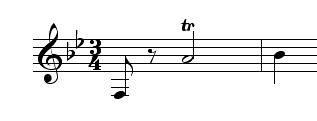

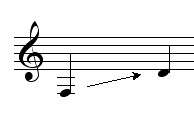
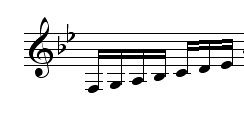
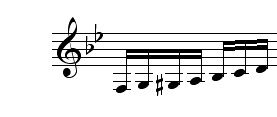
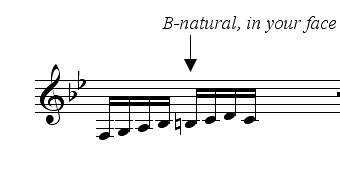



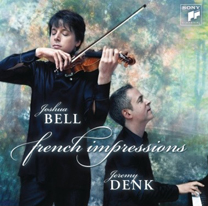

11 Comments
Hmm… When I first saw the title of today’s entry, I was thinking it was going to be another tale from your recent sojourn down in North Carolina with your artificial Christmas Tree – maybe some sort of adventure at a Bojangle’s Drive-Thru. Well, needless to say, that was not to be the case. Instead, I came across a “situation” I’ve often found myself and others in: analyzing a performance while a performance is in progress, instead of just sitting back and Listening. I’m afraid to say that that was the case with the first two installments of Schiff’s complete Beethoven cycle at Carnegie Hall a couple of weeks ago. Schiff’s technical and musical abilities are basically beyond reproach, however, I had the sneaking suspicion that there were times when I thought he was trying to lecture through his playing, his presentation. Or was it just me? Was I the one who was hearing each reiteration of the subject being outlined, emphasized each time it came back? Was I the one who kept noticing the architecture of each movement? Was I just finding some of Schiff’s performances a bit academic rather than musical? Or was Schiff trying to educate his audience through his playing?
All of these questions lead me to where I guess I meant this response was meaning to go in the first place: Is there anything “wrong” with going to a concert or recital to hear the Music, to experience the Music? rather than being given a review of Sonata Form and Harmonic Analysis?
“Completely bonkers” .. I like that, and it works well with much of Beethoven’s music. There is so many unexpected surprises. Which is what sets him apart from Spohr and others. Tremendous inventiveness. It’s be-bop.
Ach! Read “There ARE so many unexpected surprises…”
Great post, as always! And I’m sure you play the fugue much more fabulously than Mr. Schiff. I was just bored to tears by his recording of the last movement of Schubert’s D784. What should be a tempest sounded like sugarplums. Hope you’re well!!
Sound like chaos to who?
Music may make sense to a genius Like Mr. Denk
I’m sure God can understand the great music embedded in chaos, after all he invented chaos, but I can’t
Hello, I am a self-taught pianist (and terrible one at that) who has never really liked any composers other than Bach, all because of his fugues. I just could not understand Beethoven but this has given me some insight to it, so thank you very much!
I think that Schiff’s primary motive is simply to educate, rather than to dictate. A novice to any masterpiece is at an immediate advantage if given some anchorage at the outset; then once he’s gotten an initial grip, he can start getting really fatheaded and bellowing WRONG! and BUNK! at all of those despicable rules that helped him before, but are wrecking his fun in the end. Most interesting is how each person’s analysis describes the ANALYST to a ‘T’ more than it does the piece. I mean, who knows what was really going on in Beethoven’s system? Would he WANT us invading it anyway?
That said, I shall now expose myself with obscene abandon, by suggesting that the B-natural appoggiatura MIGHT simply be a reference to all of the other B-natural/B-flat battles that punctuate this thing. He just went ‘bonkers’ with it in the end, pulling all of the neighbors into a big fat brawl.
Also, remember that Opus 106 was written at a REALLY miserable pass in Beethoven’s life. And while I hear alot of you guys’s “triumph” and “humor” etc. in it, I also hear that titanic ego that makes me want to smash the !#%*/!! GLASS CASE at Starbuck’s, just because it looks like it thinks it’s smart. Besides, by 1818, the Industrial Revolution was hot underway, and one can’t help wondering if our psychic Titan wasn’t experiencing serious whiffs of the surreal nightmare of machines, deafening noise, and relentless speed that would one day run over us all whenever we stepped outside of our doors. (Oops, busted…)
Thanks for these playful yet penetrating insights. Seussian: a wonderful comparison. We played the “Grosse Fuge” (an animal similar to the “Hammerklavier”) in our orchestra recently, which was a bit like trying to walk four huge, scary-looking dogs who really, really mean no harm.
I have not yet had the fortune of listening to Schiff’s recent Beethoven interpretations, nor will I (it’s to damned expensive to buy Carnegie tickets when you’re an undergrad student), but I am familiar with Schiff’s symmetrical, dare I say-prudent- way of tackling the music of the great Germans.
I agree with you and with Jose, the first commenter, in that Beethoven’s legendary status has caused his music to be overly analyzed at the keyboard. However, what must also be in mind is that Beethoven did live in a more or less “orderly” Europe, with the Industrial Revolution and its mechanically perfect machines and all. Not to mention that his receding sense of hearing most definitely forced him into thinking more systematically and less spontaneously(improvising my means of fiddling at the
keyboard must have been arbitrary at that point for him).
My point: late Beethoven is painfully difficult to interpret; one must be able to not only make sense of the seemingly “orderly” and “improvisatory” passages , but must synthesize the two, and still bring in an original personal voice, for it is still music.
Then again, I’ll see for myself when I take on the Hammerklavier myself.
-jack
I have a wise and witty friend in his late 70s in Santa Barbara, a retired university professor, who sent me this account of an Andres Schiff Beethoven concert in October. Thought you might appreciate it.
“Last Friday I went down to the Lobero to an Andras Schiff all-Beethoven sonata recital. I noted in the LATimes review of his Wednesday performance at Disney Hall that some woman had collapsed in the fifth row and had to be taken out on a stretcher (the review added that a staff check found the woman was fine the next day). I failed to take sufficient stock of the observation that Schiff’s playing lacked drama and failed to hold your interest. Well, what is a reviewer to do when Schiff’s advanced puff presents him as one of the greatest pianists in the world? Of course, the puff always insists on his pianism (whatever that is), his meticulous attention to detail (probably likely in the case of any pianist getting ready for a performance), and on and on.
It was pouring outside the Lobero, so I waited in the lobby looking for Jill, who was supposed to show up. I retreated to my seat, clapped dutifully as Schiff sat down at the gleaming Steinway. The program was Sonatas 5 through 8 (he’s doing the whole series for EMC). I knew immediately that there was trouble ahead from the very first phrase. Brent’s always told me he hates mechanical pianists. And here was a painfully exemplary case. Admittedly, no one can complain that he missed any of the notes or that he couldn’t make the various voices clear, etc. But what wasn’t comically bad was just unequivocably painful. Several times I couldn’t resist muttering “ouch.” Then there was the bizarre disconnect between the rapturous look on his face and the plodding fingers on the keys.
A later conversation with Jill at intermission (as we were both fleeing—hey, the “Pathétique” was the second half, as if we needed it) confirmed that the watchword was definitely “aburrimiento.” The mystery of the supine woman in Disney Hall was explained: she’d been bored to death. Now here’s the clincher. You can download the CD with the identical concert from EMC on your iPod for a derisory fee. I did so. I want to share the experience with Brent. Brent, by the way, who is known for an unexplained homicidal streak, would probably have jumped on the stage and throttled Andras before the stage hands could intervene
That is a tough one, Jeremy. I think we are on the same page. I do agree with Schiff, but only as a starting point. Without a clear understanding of this incredible structure, and of its “incredible sense of order” it is impossible to dig deep enough into the Fugue of the HK and bring out all the amazing treasures hidden in all its winding black notes….
On the other hand, it is some of the most extreme music ever written, both emotionally and intellectually. If an extremely analytical approach to the fugue results into a simplification and a more dull rendering of the Fugue, then this is the worst thing one could do. In my humble opinion, it should sound as shocking as it must have been when it was first performed. In other words, it all starts from the clarity of structure which should provide a stark contrast with the “bonker-ish” character that the theme alone sets, and only a geniusly wild mind could exploit to such a degree. I have this overwhelming feeling that Beethoven simply ran out of piano while writing this fugue, which is the culmination of the most amazing journey a pianist can take within a single piece.
Then there can be a whole discussion about the struggle between structure/clarity and the extreme emotions and complexity of the music which is quintessential in Beethoven’s music and of which the HK is the perfect example.
How to resolve this struggle, walk back and forth across this fine line, and how to do that in the context of a performance, night after night, is a problem that we are left to deal with and which, you must admit, makes our life extremely interesting and worth living.
Anyhow….hope you’re having fun, and that life is treating you well…all the best for your upcoming performances and hope to meet again soon…
One Trackback
[…] Order out the Window Another great post from the always thought-provoking Jeremy Denk. (tags: jeremy denk thinkdenk classical music blog) […]